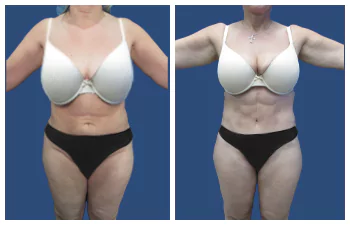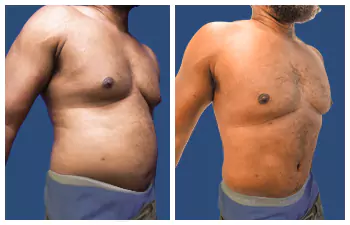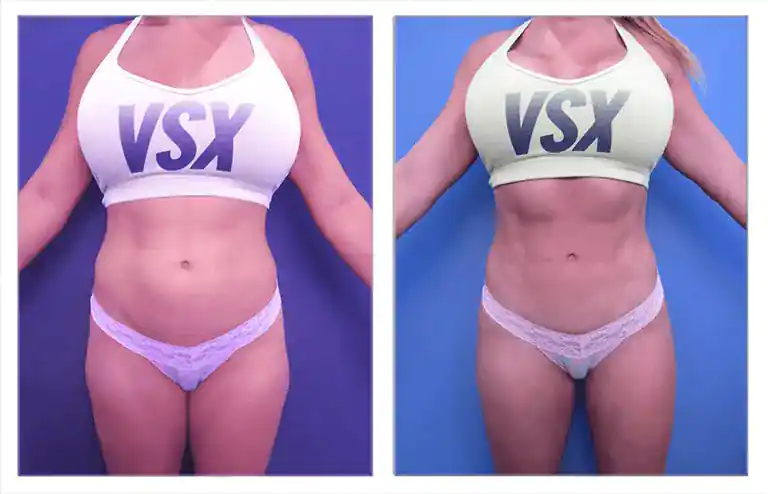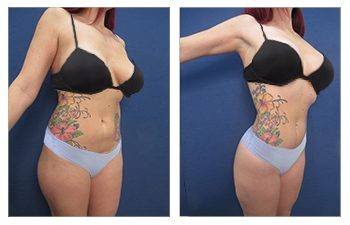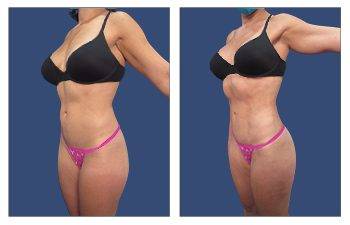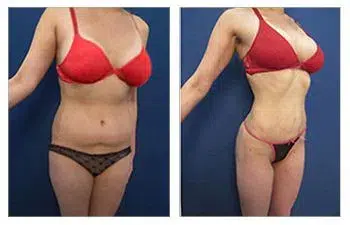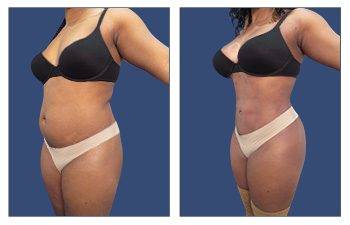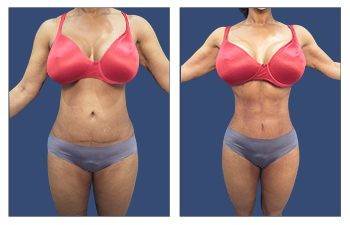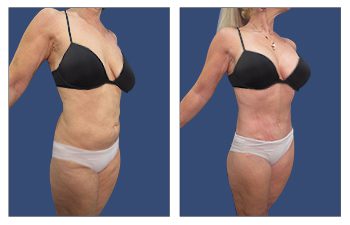Introduction: Stomach Liposuction
Stomach liposuction is a cosmetic procedure designed to remove stubborn fat deposits from the abdominal area, resulting in a slimmer and more contoured appearance. During the process, a skilled plastic surgeon uses a small tube called a cannula to suction out unwanted fat cells, creating a more defined waistline and flatter stomach.
After the procedure, patients can expect some swelling, bruising, and discomfort, which typically subsides within a few weeks. It is important to follow post-operative care instructions provided by the surgeon to ensure a smooth and successful recovery.
Before undergoing stomach liposuction, it is crucial to consult with a skilled and experienced plastic surgeon. Viewing before and after photos of previous patients can help manage expectations and understand the potential results. Choosing a reputable and qualified surgeon will also minimize the risk of complications and ensure a satisfactory outcome.
In conclusion, stomach liposuction can effectively enhance body contours and boost self-confidence. However, it is essential to approach this procedure with realistic expectations and seek guidance from a professional to achieve the desired results.
What Is Stomach Liposuction?
Stomach liposuction is a popular cosmetic procedure designed to remove excess fat from the abdominal area, resulting in a flatter and more sculpted stomach. This surgical treatment targets stubborn fat deposits in the midsection that are resistant to diet and exercise. Stomach liposuction is an effective way to achieve a slimmer silhouette and improve body contours. The procedure involves making small incisions in the abdomen through which a thin tube, called a cannula, is inserted to suction out the unwanted fat cells. It is important to note that stomach liposuction is not a weight loss solution, but rather a body contouring technique for individuals who are close to their ideal weight and have isolated areas of fat they wish to address. Recovery time is typically minimal, and the results can be long-lasting with a healthy lifestyle.
Upper Stomach Liposuction
Upper stomach liposuction is a cosmetic surgical procedure aimed at removing excess fat and tissue from the upper abdominal area. During the procedure, a small, blunt cannula is used to suction out the unwanted fat through tiny incisions in the skin. The cannula is carefully maneuvered to target specific areas, providing precise results with minimal damage to the surrounding tissue.
To reduce bleeding and make the fat-removal process smoother, a wetting solution is infused into the tissues before the liposuction begins. This solution contains a mixture of saline, local anesthetic, and epinephrine, which helps numb the area and constrict blood vessels, reducing the risk of excessive bleeding.
After the surgery, patients can expect some swelling and drainage from the incision sites. To aid in the healing process and minimize swelling, a compression garment is typically worn for several weeks following the procedure. This garment helps to support the treated area, reduce swelling, and shape the newly contoured abdomen.
Overall, the recovery process for upper stomach liposuction varies from person to person but generally involves minimal downtime and discomfort. As the swelling subsides over time, patients can enjoy the full results of their slimmer, more contoured upper abdominal area.
Middle Stomach Liposuction
Middle Stomach Liposuction is a cosmetic procedure designed to sculpt and contour the abdominal area, specifically targeting the middle stomach where fat tends to accumulate. This technique is ideal for individuals looking to achieve a smoother and more toned appearance in their midsection. The procedure involves the removal of excess fat deposits through a minimally invasive approach, resulting in a flatter and more defined abdominal area.
By targeting specific areas of the midsection, Middle Stomach Liposuction can provide patients with a more proportionate and aesthetically pleasing silhouette. It is important to note, however, that this procedure is not a substitute for a healthy lifestyle and should be considered as a complementary option for individuals who struggle with stubborn fat in the abdominal region.
Consulting with a qualified and experienced medical professional is crucial in determining whether one is a suitable candidate for Middle Stomach Liposuction. A thorough assessment of fitness for this treatment, as well as realistic expectations, can be effectively addressed during a consultation. Ultimately, seeking the guidance of a skilled practitioner can ensure safe and satisfying results in achieving a more sculpted and contoured midsection.
Lower Stomach Liposuction
Lower stomach liposuction is intended to remove fatty deposits from the region of the abdomen extending from the belly button to the pubic region. This area must be conservatively liposuctioned to preserve the female silhouette that requires a concave upper abdomen when compared to the lower abdomen. Conservative liposuction must also be employed as the skin of the lower abdomen is often poorly textured. Specifically, stretch marks can appear aesthetically unappealing and may be laden over the lower abdomen; stretch marks will appear worse when the fat is removed resulting in more slack in the skin.
How to Tighten Stomach Skin
Tightening the skin on your stomach is a common goal for many people, whether after significant weight loss, childbirth, or simply as a result of aging. Various methods and techniques can help to tighten and firm up the skin on your stomach, ranging from natural remedies and exercises to cosmetic procedures. By incorporating these strategies into your lifestyle, you can achieve a tighter and more toned stomach while improving your overall confidence and well-being.
Tighten Stomach Skin with Renuvion
Renuvion is a cutting-edge technology that can effectively tighten stomach skin after weight loss or pregnancy. The process involves the utilization of radiofrequency energy and helium plasma to stimulate collagen production in the targeted area, leading to skin tightening.
During the procedure, a small incision is made through which a thin wand is inserted. The wand delivers a combination of radiofrequency energy and helium plasma to the underlying tissues, allowing for precise and controlled skin tightening. This process also stimulates the production of new collagen, which further enhances skin tightness and overall appearance.
One of the key benefits of Renuvion is the minimal scarring, as the incisions made during the procedure are typically small and well-hidden. Additionally, the recovery time is relatively quick, with many patients able to resume normal activities shortly after the treatment. The results of Renuvion are long-lasting, making it an excellent option for individuals looking to achieve a firmer, more toned stomach after weight loss or pregnancy.
Overall, Renuvion is a highly effective option for stomach skin tightening, utilizing advanced technology to produce significant and long-lasting results in a minimally invasive manner.
Thighen Stomach Skin with Strategic Excision
Thigh and stomach skin can be addressed with strategic excision, a process that involves carefully planning the removal of excess skin and tissue to achieve a tighter, more toned appearance. Consulting with a board-certified plastic surgeon is crucial in determining the most appropriate excision technique and setting realistic expectations for the outcome. The surgeon will assess the patient’s individual needs and goals to create a customized plan for skin tightening through excision.
Proper post-operative care is essential for optimal results. This includes adhering to the surgeon’s recommendations for activity restrictions, wound care, and follow-up appointments. It is important to follow the post-operative instructions meticulously to ensure the best possible outcome.
By choosing strategic excision and consulting with a board-certified plastic surgeon, patients can achieve a toned, firmer appearance in their thigh and stomach areas. This specialized approach to skin tightening ensures that excess skin and tissue are carefully removed, resulting in a more sculpted, contoured physique.
How Long does the procedure take?
The duration of the procedure for a cosmetic liposuction surgery can vary depending on the specific areas being targeted, but typically it takes around 1 to 4 hours. The type of anesthesia used can also vary, but most commonly, it is performed under local anesthesia with sedation or general anesthesia.
Following the procedure, patients can expect some downtime for a few days to a week, during which they may experience swelling, bruising, and discomfort. The full recovery timeline can range from several weeks to a few months, with gradual improvement in the treated areas.
The results of liposuction can be permanent, as the procedure physically removes fat cells from the body. However, it is important to maintain a healthy lifestyle to prevent weight gain in other areas. Weight gain after the procedure can still occur if a healthy diet and regular exercise are not maintained, as the remaining fat cells in the body can still expand. Therefore, it is important for patients to understand the importance of maintaining a healthy weight post-surgery.
How Long Do Results Last?
The longevity of results from body contouring procedures can be affected by several factors. The body’s ability to store excess energy in remaining fat cells plays a significant role in how long the results will last. If a person continues to consume more calories than their body needs, these remaining fat cells can expand and compromise the outcome of the procedure.
Furthermore, the time it takes for the skin to adjust to the new contours is crucial. Skin elasticity and overall health also impact how long the results will last. A healthy lifestyle, including regular exercise and a balanced diet, can help maintain the results for a longer period. Additionally, individuals with good skin elasticity are more likely to retain the improvements from the procedure.
To preserve the results over time, maintenance is often needed. This may include regular exercise, a healthy diet, and proper skincare. Potential risks of body contouring procedures include infection, scarring, and dissatisfaction with the results. It is important to follow all post-operative care instructions and attend follow-up appointments to minimize these risks and ensure the longevity of the results.
How much does stomach liposuction cost?
The cost of stomach liposuction varies depending on the country and specific factors. In the UK, stomach liposuction can range from £2,000 to £6,000. In the Netherlands, the cost may be similar, ranging from €2,500 to €7,000. In the US, the average price for stomach liposuction is around $3,000 to $7,000. In Turkey, the cost may be lower, ranging from $2,000 to $5,000.
Factors that can affect the cost of stomach liposuction include the number of areas being treated, with additional areas increasing the overall price. Other factors such as the surgeon’s experience, the facility’s location, and any additional services provided, such as post-operative care, anesthesia, and follow-up appointments, can also influence the cost.
Ultimately, the cost of stomach liposuction will depend on several factors, and individuals need to research and consult with a qualified plastic surgeon to get an accurate estimate for their specific needs.
Conclusion: Stomach Liposuction
When preparing for stomach liposuction, it is crucial to undergo a thorough preoperative check-up to ensure that you are a suitable candidate for the procedure. During the surgeon consultation, it is essential to communicate your expectations and ask any questions you may have about the process, potential side effects, and the recovery process.
Wearing a compression garment after the procedure is important as it helps reduce swelling and promote proper healing. It is recommended to resume regular activity within 48 hours to avoid complications, but heavy weight lifting and extensive cardio should be avoided until obtaining the doctor’s approval.
For male stomach liposuction, the specific steps and techniques involve numbing the tissues with local anesthesia, making small incisions, and infusing a tumescent fluid into the targeted area to facilitate the fat removal process with minimal discomfort.
In conclusion, careful consideration of the preoperative check-up, clear communication with the surgeon, understanding the recovery process, and following postoperative instructions are essential for a successful stomach liposuction procedure.



